Conservatives’ tight grip on media access not living up to promise to be ‘most accessible and transparent campaign,’ say reporters
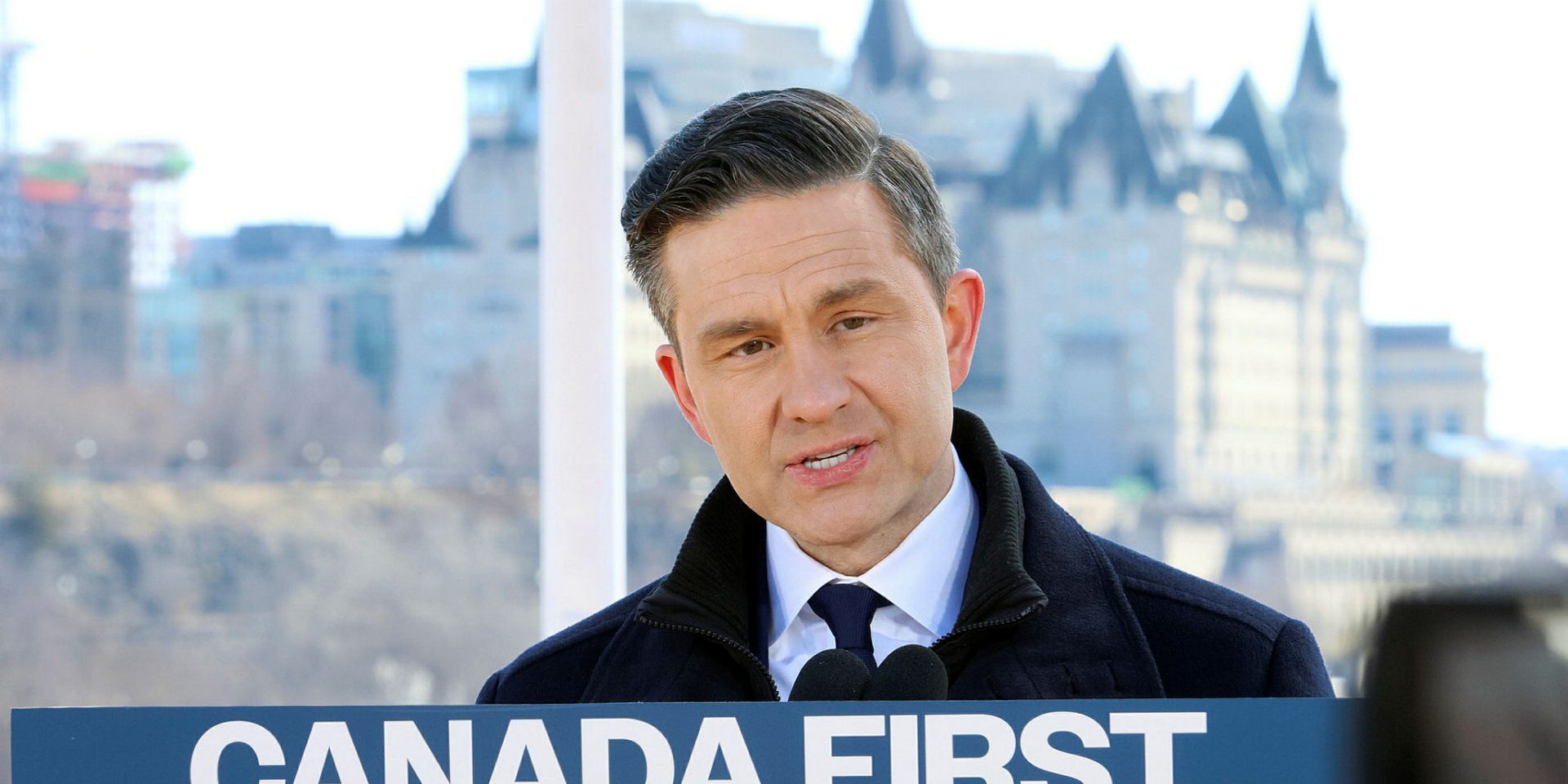
Conservative Leader Pierre Poilievre’s national campaign has attempted to keep a tight grip on the media’s access to its candidates—figuratively and literally—in the first two weeks of the election, answering a fraction of the questions fielded by his three main rivals, all while curating who will be allowed to ask questions and attempting to direct what can be asked.
But as frustrations grow at public events and press conferences, and as the relationship between Poilievre’s team and the journalists attempting to follow it becomes increasingly contentious, those reporters say the campaign is losing its hold on the situation. And as rallies grow larger and more chaotic, they could soon reach a boiling point.
In the past week, The Hill Times has spoken to nearly a dozen journalists from various outlets covering the four national leaders’ tours to get a sense of how much or how little access they are genuinely receiving, and what strategies those campaigns are employing to not only manage their message, but also the messengers in the media.
While experiences vary from reporter to reporter, depending on which campaign they have been assigned, which outlet they work for, or even in which region of the country the leader stops, the Conservative campaign in particular is failing its promise of being one of “the most accessible and transparent campaigns in recent memory.”
Speaking with The Hill Times on a not-for-attribution basis out of fear of retaliation from the campaign, journalists covering the Poilievre campaign say that being barred from the tour’s official bus and plane was only been the beginning of the obstacles encountered in trying to hold the candidate to account.
Of the 65 questions Poilievre has fielded at his daily broadcasted press conferences from March 23 through April 6, he has made particular effort to ensure an “equitable balance” between national and local, independent, or minority-community-focused outlets, offering a total of 25 questions to those reporters and, on some days, three or all four of the available questions.
Global News—including its national and local affiliate reporters—was given the most questions of any single outlet, five, across those two weeks, followed by Radio-Canada, The Globe and Mail, and The Toronto Sun with four each. Additionally, the three questions The Sun’s Brian Lilley asked are equal to the total number of questions given to each of CTV News, The Canadian Press, FrancoPresse, and the CBC, the latter of whom has not been given a question since March 27.
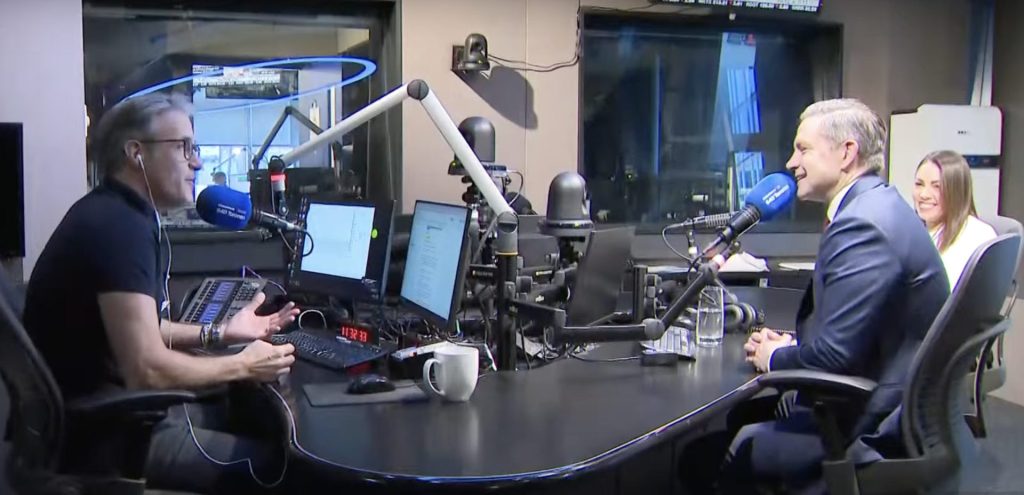
In comparison, Liberal Prime Minister Mark Carney has been asked just shy of 150 questions—the third highest total of the four major parties—and typically allocates 15 to 20 minutes at the end of each press conference for one question and one follow-up from as many reporters as that time allows. This total includes the questions Carney has taken while he has “paused” his campaign, and returned to Ottawa to address tariffs imposed by the United States in his capacity as prime minister. Additionally, following the press conferences on the road, local Liberal candidates and a campaign staffer are made available to speak with reporters, prioritizing questions from local outlets who may not have gotten their question answered by Carney.
NDP Leader Jagmeet Singh has fielded 208 questions during the March 23 to April 6 timeframe, while Bloc Québécois Leader Yves-François Blanchet has taken 163 questions.
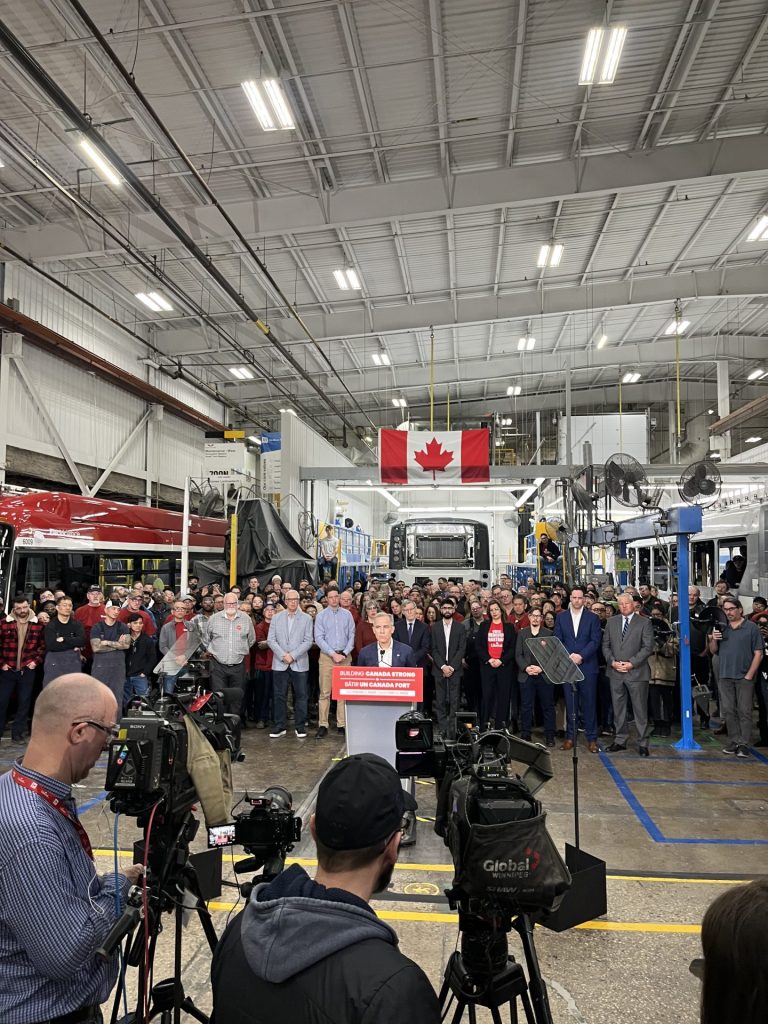
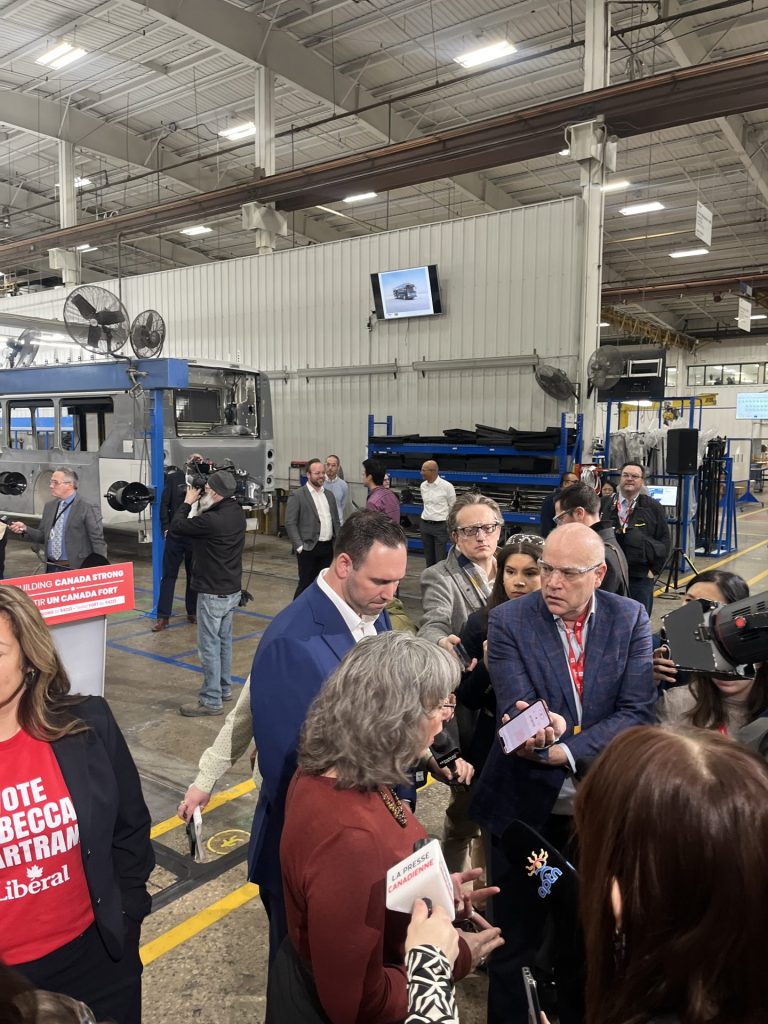
In a statement, Liberal campaign spokesperson Jenna Ghassabeh said the Liberals are “committed to ensuring robust media access and transparency,” noting that unlike Poilievre’s campaign, Carney’s has a full media delegation allowed to travel with them.
However, while journalists are still allowed on the Liberal campaign bus and plane, they told The Hill Times that Carney has not been made available for smaller scrums on the plane, nor does he come by for “chit-chat.” Additionally, those journalists said Carney has primarily been driving in a separate vehicle from the campaign bus during long stretches of travel.
Ahead of the start of the campaign, the Conservative national campaign director Jenni Byrne informed journalists they would not be allowed on board party buses and planes with Poilievre, who is running for re-election in Carleton, Ont., while covering his national campaign.
Byrne, a key adviser since Poilievre’s bid for party leadership in 2022, wrote in an email to the press gallery on March 18 that, as travel costs have “risen considerably,” so has “the capacity for digital and remote access at public events.”
Byrne wrote that the campaign would provide two to three days’ advance notice on event locations, conferencing, and logistical services for media availability to ensure “an equitable balance” between local and national media.
However, reporters who have covered Poilievre’s rallies—or failed to keep up with the fast-paced and long-distance tour—have found that most of those promises have not met expectations.
While the campaign pre-selects who will be allowed to ask a question and has continued the party’s practice of physically holding the microphone—turning it off immediately after a reporter’s question—there have been increasing reports of the campaign attempting to find out what will be asked and suggesting an alternative question, with the reporter losing their question when they do not comply.
In the past week, several outlets, including the CBC, Politico, and several independent journalists, have publicly reported or spoken out about the campaign’s treatment of the journalists covering Poilievre’s public events, including rallies and campaign stops in local communities.
🚨WATCH: #CBC's Evan Dyer reports on how #PierrePoilievre is treating #cdnmedia on the campaign trail.
— Jason Pugh 🇨🇦 🏳️🌈 (@TheJasonPugh) April 4, 2025
It seems like @PierrePoilievre is more concerned with vetting reporter's questions than his own #CPC candidates.#cdnpoli #Elxn45 pic.twitter.com/Fg2fg3ffFk
Both The Globe and CBC’s Evan Dyer have reported instances of the campaign pressuring them to change what questions they would ask and withholding their opportunities when they did not comply.
Poilievre’s campaign did not respond to The Hill Times’ request for comment by publication deadline.
During the April 6 episode of The Herle Burley podcast, independent journalist Justin Ling confirmed he had witnessed the incident with the CBC at Poilievre’s press conference in Trois-Rivières, Que., and added a third instance, alleging that during his stop in Kingston, Ont., Poilievre had attempted to get the local Kingstonist reporter to ask a question about the potential reinstallation of a John A. Macdonald statue rather than his planned question on tariffs impacting the city.
The reporter ultimately asked a question about Macdonald’s statue, while framing it in the context of how that would impact efforts at truth and reconciliation, but only after first asking his pre-planned question.
Kingstonist reporter Bill Hutchins told The Hill Times that during his coverage of the rally the night before, he had requested a one-on-one interview with Poilievre, and had informed the team the Macdonald statue would be one of several topics he hoped to ask about. When he was informed there wouldn’t be time for an interview prior to the press conference the following day, Hutchins said Poilievre’s team had attempted to “steer” him towards only asking that question, but he had decided against it at the last moment.
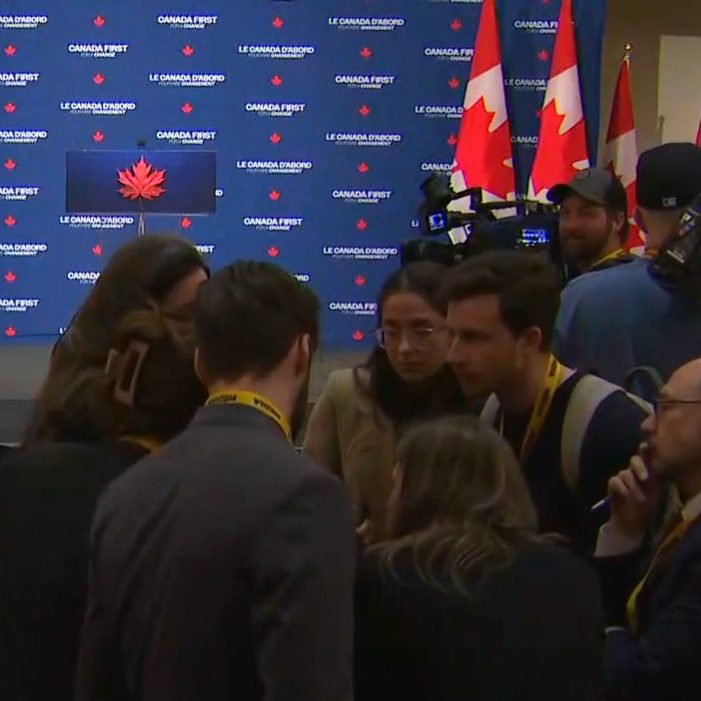
Ling compared the behaviour of the campaign to a “tin-pot dictator with his little flying press monkeys,” and forecasted “a more serious blow-up between the media and the Conservative press team in the coming days.”
As the campaign attempts to exert ever-tighter control over the media covering it, those journalists say they have only redoubled their efforts to work together to hold Poilievre accountable. While huddles are a feature of most press conferences outside of the election, they are generally used to decide who is asking what and in what order. For covering Poilievre, it is an exercise in rationing.
One reporter said that while most journalists view each other as teammates, strategizing and trading questions depending on who gets one, not everyone seems to be on the same side.
Several reporters confirmed that outlets like the Toronto Sun, The Western Standard, Rebel News, and True North do not participate in those pre-scrum strategy huddles.
Greg MacEachern, a former Liberal ministerial staffer and founding principal at KAN Strategies, has been vocal about what he views as the Poilievre campaign’s disrespect of journalists long before the election. However, he said those journalists must also start sticking up for themselves.

Still, Poilievre’s strategy of limiting media access is far more suited to a campaign with a 20-point lead rather than a two-party horse race, MacEachern said.
“When you’re up 20-25 points, you can do pretty much whatever you want, but this isn’t a strategy that will increase your potential available vote,” MacEachern said. “But if you’re trying to say you’re the best person to stand up to [U.S. President Donald] Trump but you’re afraid of the national media, it’s a pretty contrary message.”
Former Conservative campaign staffer Dan Mader, who led the development of the party’s 2021 campaign platform and oversaw policy and speechwriting during the election, said that while the Poilievre campaign is maintaining the same message discipline that has led them to historic levels of support, Poilievre can’t give up any advantage when Carney is making the most his, particularly the office of prime minister.
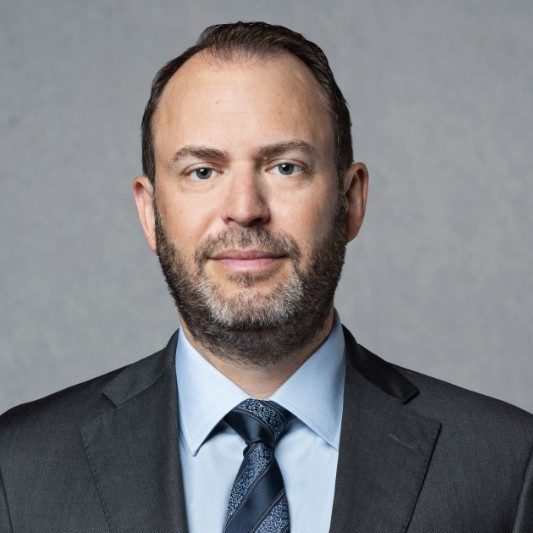
“Carney has the incumbent advantage, and is going to use it as much as they can,” Mader said. “So my advice to Poilievre is that his advantage is he’s more comfortable and sure in his message … he should talk to the media more and answer more questions because he’s good at it.”
However, Mader, a founding partner with Loyalist Public Affairs, said the Conservative campaign should resist changing its strategy simply because it upsets the media and pundits.
“They are gaining support … polls are showing that they may have started to close the gap, so they need to keep pushing their message and not dilute it by answering every question under the sun.”
The Hill Times






 LICENSING
LICENSING PODCAST
PODCAST ALERTS
ALERTS













